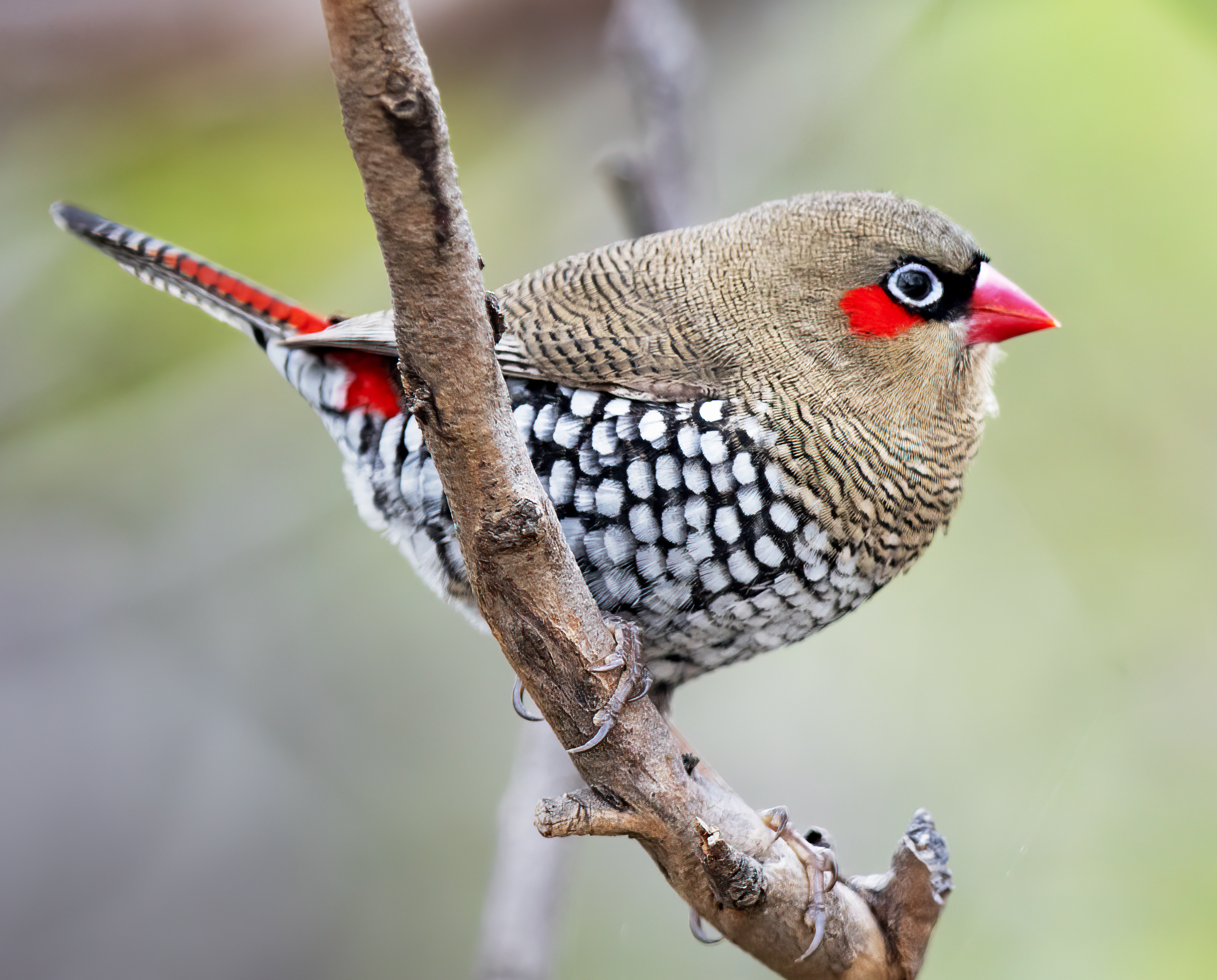
21 June 2025
The Red-eared Firetail (Stagonopleura oculata) is a small finch species, appealing with its fine barring, spotted underbody, black face mask, and striking red rump and ear spot. Though often overlooked, its preservation in Australian aviculture is a dedicated effort due to its rarity and breeding challenges.
In the wild, these finches primarily inhabit dry open woodlands in Western Australia, from Kimberley to eastern Esperance. They are seen in single pairs or family groups, displaying a nervous, shy nature. Observing their natural habitat, particularly tea-tree areas, aids captive breeding success, as these trees offer antibacterial properties beneficial for gut health.
For captive care, single pairs should be housed in sheltered, north-facing aviaries, ideally 2.4m wide x 5m long x 2.2m high. Aviaries require full roofing, wind protection, and natural brush like tea tree for privacy. Crucially, strict vermin control is vital, as Red-eared Firetails are highly sensitive to rats, mice, and feral cats, which cause significant losses.
Their diet necessitates variety: Elenbee’s Greens ‘n’ Grains, Panorama Seed, and French white millet are preferred, often coated with hemp oil and nutritional supplements. Essential greens include bok choy, pak choi, and white clover, especially during breeding. Mealworms are a favored live food, supplemented in winter with an oil mix containing Omega 5, cod liver, castor, hemp, and linseed oils. Gut health is further supported by Orego-Stim Liquid™, apple cider vinegar, and garlic.
Red-eared Firetails prefer to build large nests (20-30cm) in dry brush on the aviary's north wall, or in tall grasses, using materials like Johnson and Couch runners, Pampas heads, and emu feathers. Males' beaks darken when ready to breed. Parents are secretive, and quiet chicks are removed at four weeks post-fledging for DNA sexing. Females can breed for many years. To reduce stress, newly fledged young should initially be placed in a holding aviary adjacent to their parents. Maintaining genetic diversity through swapping bloodlines is crucial for the species' long-term viability in aviculture.